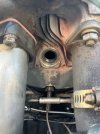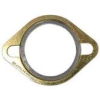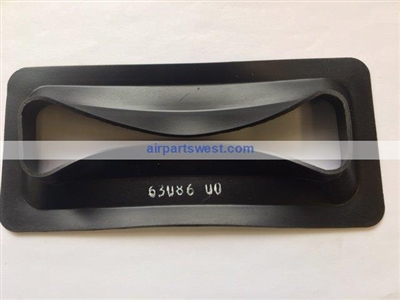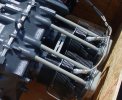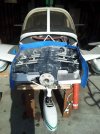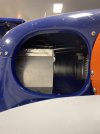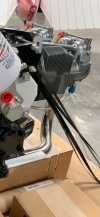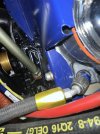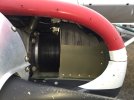DesertNomad
Pattern Altitude
I am looking for ideas to figure out why #3 is running significantly hotter than the others on a Cherokee with O-360. In cruise it will sit around 370-380, but during climb is difficult to keep under 430. Outside temperature at 5,000' (field elevation) is 70F.
Vy is 74 and a climb at 85-90 will help keep it under 420F, but that still seems quite warm. At Vy to 8000', it will briefly hit 440F.
- The baffling is good - no light escapes behind the baffle wall.
- We are unable to detect any evidence of an induction leak and the intake tube is solid.
- We have swapped CHT temperature probes.
- Compressions are constantly 76-77.
- Oil analysis is normal.
- Oil consumption is normal.
- Engine has about 1650 hours and flies 50 hours a month.
- It starts, flys and runs smoothly.
- The underside of the cylinder has a pink stain that I am unable to find any discussion of, but it is almost certainly from heat. The other cylinders have pink staining too but not nearly as extensive.
Any ideas as to what else I can look at?
Vy is 74 and a climb at 85-90 will help keep it under 420F, but that still seems quite warm. At Vy to 8000', it will briefly hit 440F.
- The baffling is good - no light escapes behind the baffle wall.
- We are unable to detect any evidence of an induction leak and the intake tube is solid.
- We have swapped CHT temperature probes.
- Compressions are constantly 76-77.
- Oil analysis is normal.
- Oil consumption is normal.
- Engine has about 1650 hours and flies 50 hours a month.
- It starts, flys and runs smoothly.
- The underside of the cylinder has a pink stain that I am unable to find any discussion of, but it is almost certainly from heat. The other cylinders have pink staining too but not nearly as extensive.
Any ideas as to what else I can look at?

